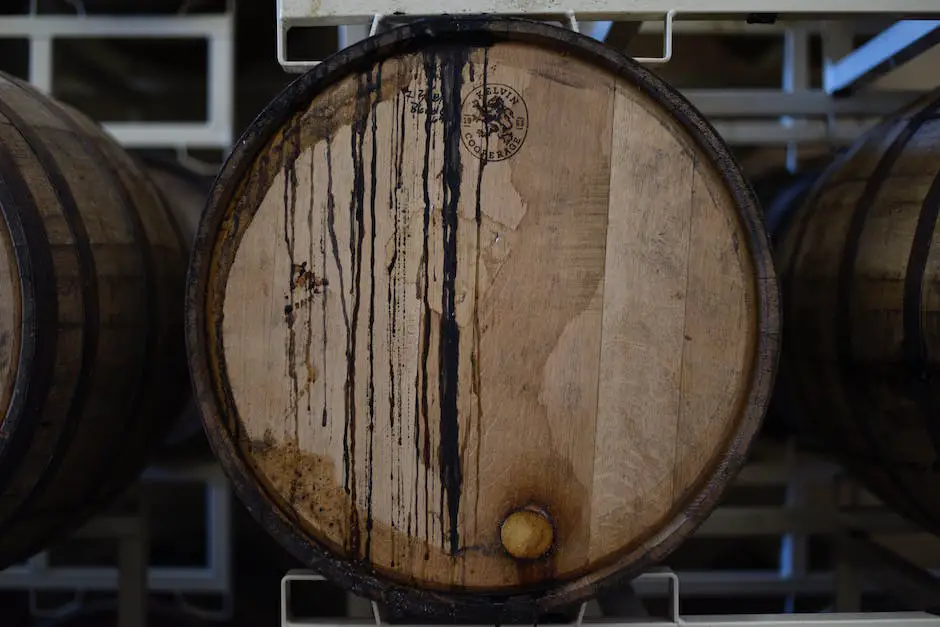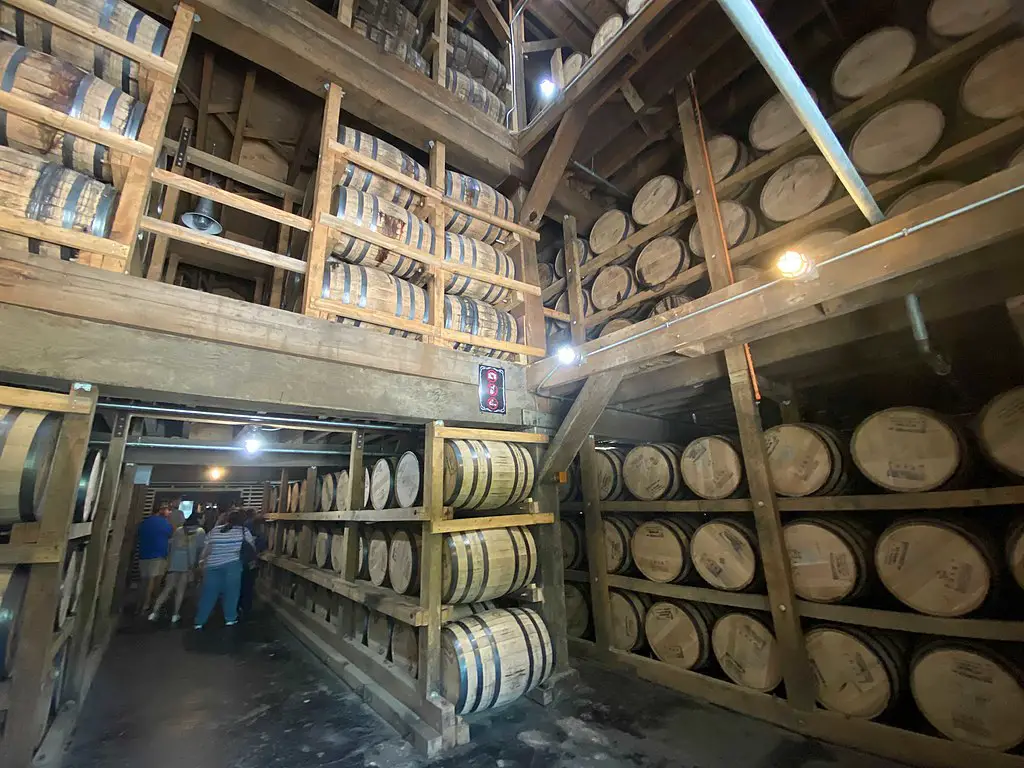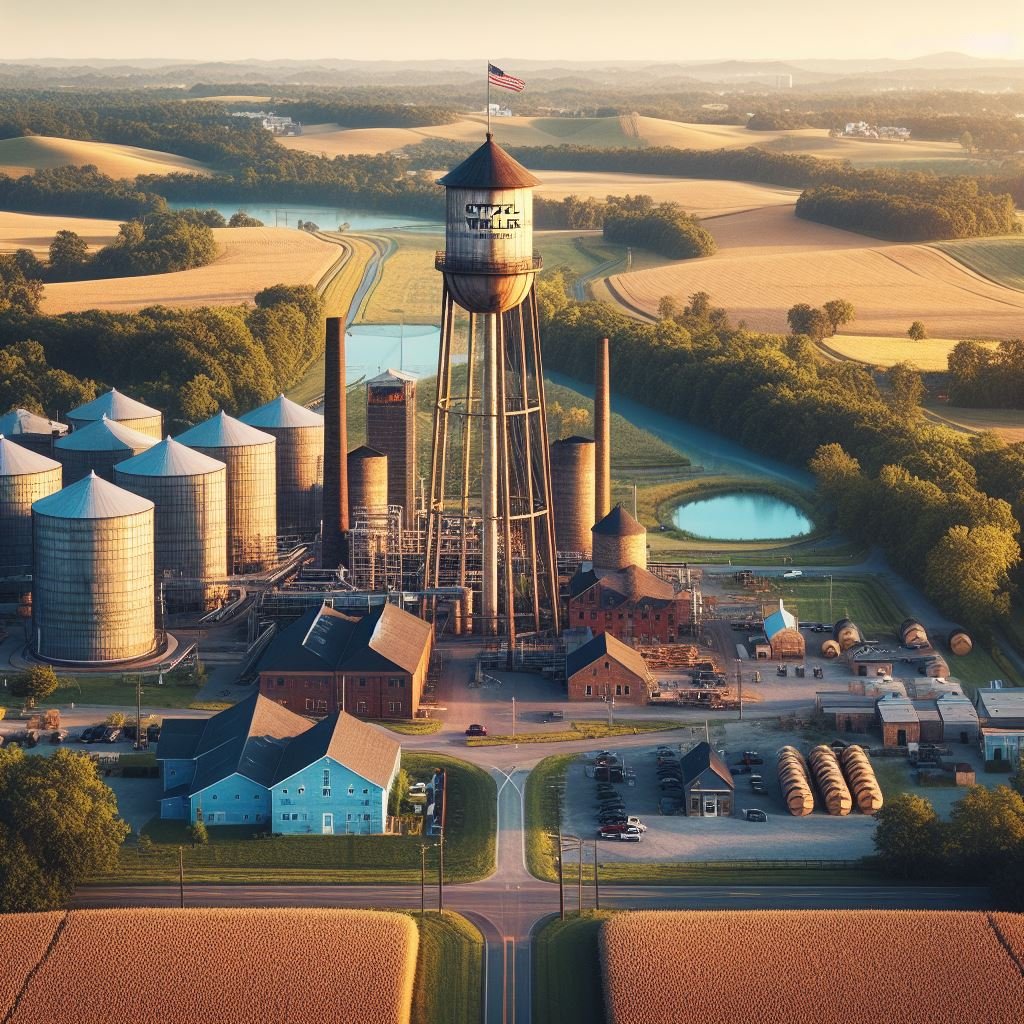The mesmeric world of whiskey – a captivating fusion of history, science, and craftsmanship – beckons admirers to the golden amber liquid of life. Whether you’re embarking on a journey to know more out of sheer curiosity or to nurture an established fascination, understanding the complexities of whiskey distilleries and their tours can offer a beautifully enriching experience. Our exploration dives itself into the birth and evolution of whiskey distilleries, enlightens you on what to anticipate on a distillery tour, guides you through some of the top-rated global distilleries, and acquaints you with both essential and unspoken etiquette to navigate your whiskey distillery adventure.
Table of Contents
History of Whiskey Distilleries

Origins of Whiskey Distilleries
Whiskey distilleries have a rich and colorful history that can be traced back to Scotland and Ireland. The process of distilling fermented grain mash originated as early as the 15th century. Initially, it was the monks and the apothecaries who were behind the distillation, with the whiskey used mainly for medicinal and monastic needs.
The whiskey distilleries in Ireland and Scotland would previously use pot stills—a large copper pot that heats and vaporizes the alcohol—to make small batches of whiskey. The American distilleries, on the other hand, evolved from these original methods and adopted the use of a continuous still, also known as a patent still. This allowed them to produce whiskey more efficiently and at a larger scale.
The Process of Whiskey Making
Whiskey-making begins with malting, where barley is soaked in water and allowed to germinate. After germination, the barley is dried in a kiln to stop the growth process, producing what is known as malt. The malt is then milled to a coarse flour or grist, which is mixed with hot water in a mash tun to extract the soluble sugars. The liquid obtained, known as the wort, is transferred to a fermenting vat or washback where yeast is added. This is when fermentation takes place, as the yeast converts sugars into alcohol.
The alcoholic liquid—now called wash—is then distilled to concentrate and purify the alcohol, while also extracting flavors and aromas. Ageing is the final step. The whiskey is transferred into oak barrels, where it sits to mature for several years. The maturation process within the barrel is where the whiskey derives much of its final flavor and color.
Types of Whiskey
The type of whiskey is largely determined by the grain used during the fermentation process, the distilling method, and the ageing process. For example, Bourbon needs to be distilled from a grain mix that’s at least 51% corn, aged in new charred oak barrels, and cannot be distilled to more than 160 proof.
Irish whiskey is one of the most beloved spirits in the world, with a rich and storied history dating back centuries. Lear about the four types of Irish Whiskey.
Scotch Whiskeys, on the other hand, has stricter regulations and can either be made from malted barley or a mix of malted and unmalted grains. They must be aged for a minimum of three years in oak barrels.
| Type of Whiskey | Country of Origin | Example Distiller |
|---|---|---|
| Bourbon | USA | Maker’s Mark |
| Tennessee Whiskey | USA | Jack Daniel’s |
| Rye Whiskey | USA, Canada | Bulleit Rye |
| Canadian Whisky | Canada | Crown Royal |
| Scotch Whisky | Scotland | Macallan |
| Irish Whiskey | Ireland | Jameson |
| Japanese Whisky | Japan | Yamazaki |
| Single Malt | Various | Glenfiddich (Scotland) |
| Blended Whiskey | Various | Johnnie Walker (Scotland) |
Each type of whiskey has its own unique characteristics, production methods, and flavor profiles. For instance, Bourbon must be made in the U.S. and aged in new charred oak barrels, while Scotch Whisky has regional variations like Islay, Speyside, and Highland, each offering a different taste experience.
Famous Whiskey Distilleries and Their Tours
Visiting whiskey distilleries is a fantastic way to learn about the cultural and historical significance of whiskeys. The Jameson Distillery in Ireland, for instance, is famous world-over and offers a comprehensive insight into their whiskey making process. Visitors can indulge in whiskey tastings—sipped straight and compared side-by-side with American whiskey and Scotch.
In America, the Bourbon Trail in Kentucky is a must-visit for whiskey enthusiasts. It includes legendary distilleries like Jim Beam and Maker’s Mark, among others, where visitors can tour the premises, smell the bourbon maturing in enormous warehouses, and taste different aged bourbons straight from the barrel.
Unfolding the Unique Tales of Distilleries
Every whiskey distillery is steeped in its own unique tales and captivating anecdotes that shape its identity. Jack Daniel’s Distillery, for example, has its roots in the town of Lynchburg, Tennessee and carries an intriguing tale about its founder. Jack Daniel succumbed to a lethal gangrene infection, a result of kicking his safe out of frustration due to his inability to remember the combination, serving as a reminder of the consequences of allowing work-related stress to take control.
The Maker’s Mark Distillery in Kentucky, on the other hand, encapsulates a delightful tale revolving around their trademark. The prominent hand-dipped red wax seal of Maker’s Mark is actually a tribute to the family matriarch’s affinity for 19th-century English pewter pieces, which were typically sealed with wax, a symbolic representation that has transformed into a distinctive brand insignia over the years.
Enriched with history, culture and tasting sessions, whiskey distillery tours also serve as a wonderful avenue for storytelling, befitting the complex nature of whiskey spirits.
What to Expect on a Whiskey Distillery Tour

The Art of Whiskey Distillation
A quintessential component of whiskey distillery tours is an enlightening walk-through of the distillation process. This journey of transformation begins with the vital raw ingredients – corn, rye, wheat, or barley. Once milled, these grains are merged with hot water, setting free the natural sugars. This gives birth to a sweet essence, or “mash.” Upon the addition of yeast during the fermentation process, these sugars are converted into alcohol, producing an intermediate product known as “wash” or “beer.”
The ensuing stage is distillation, an application of heat to the fermented mash. As alcohol possesses a boiling point lower than that of water, it evaporates earlier and is collected separately. The distillate is then further purified and its alcoholic strength enhanced, by a second, or “spirit,” distillation. The reformed and refined liquid, collected after this step, is termed the “new make spirit.” At this point the liquid is basically moonshine and of high alcohol content.
Aging and Maturation Process
After distillation, the new make spirit is filled into oak barrels for maturation. This is a crucial phase where the whiskey develops its final flavor and character. The type of oak, its char level, and how long the whiskey spends in the barrel all influence the final product.
The aging process may vary depending on the specific laws and traditions of each country. In America, for bourbon to be legally defined as such, it must be matured in new charred oak barrels for a minimum of two years. Note that, the longer the whiskey is aged, the richer and more complex the flavor profile tend to be.
What to Expect on a Whiskey Distillery Tour
Going on a whiskey distillery tour not only allows you to experience the intricate processes involved in distilling premium whiskey but also gives you insight into the various stages of production. As a visitor, you can look forward to sights of expansive grain fields, bustling milling rooms, serene mash tuns, lively fermentation vats, gleaming copper-pot stills, and endless aging warehouses.
Don’t shy away from asking questions to enhance your learning journey. Some intriguing questions to consider might be: What types of grains constitute the mash bill? Which yeast strains are involved in the fermentation process? How do the distillers operate the stills and at what proof is the whiskey taken off? What kind of barrels are preferred for aging, and what is the typical aging period?
Bear in mind that the objective of these tours is to gain a higher understanding of the production of whiskey, so seize this opportunity to immerse in the vast amount of information. Each distillery has its signature techniques and traditions, which makes every tour a unique experience.
Reviewing Top Whiskey Distilleries to Tour

Spotlight: Jameson Distillery, Ireland

Situated in Midleton, Ireland, the Jameson Distillery is renowned for its engaging tours that enable you to witness first-hand the intricacies of whiskey production. Boasting a consistent rating of 4.7 stars out of 5, the tours offer a deep dive into the trade secrets of one of the globe’s most esteemed distilleries. Attendees frequently commend the knowledgeable guides and the opportunity to partake in a comparative whiskey tasting as the highlights of the tour. Jameson distillery Dublin is not to be missed.
Lagavulin Distillery – Islay, Scotland

The Lagavulin Distillery in Islay, Scotland has established itself as a site of significant interest for whiskey aficionados, with an impressive rating of 4.7 stars from its visitors. On the tour, they show the traditional method of distilling whiskey using peat and smoke, providing a unique and authentic experience. It also features tasting sessions that include some of their aged single malt whiskies.
Jack Daniel’s Distillery – Lynchburg, Tennessee

In the USA, the Jack Daniel’s Distillery located in Lynchburg, Tennessee offers the revered “Angel’s Share” tour, which includes a trip to the historic Barrelhouse 1-14. Earning an average rating of 4.8 stars out of 5 from visitors, the tour provides an in-depth look at the distilling process, secrets behind Jack Daniel’s distinct flavor and includes samples of exclusive Jack Daniel’s whiskeys.
Yamazaki Distillery, Shimamoto, Japan

Yamazaki Distillery located in Shimamoto, Japan is best known for its pioneering role in establishing Japanese whiskey. Offering a 90-minute tour rated 4.5 stars that covers the detailed whiskey-making process and the history of Yamazaki, it is a crucial stop for any whiskey lover. The tour concludes with a tasting of Yamazaki whiskies, including some which are exclusive to the distillery.
Macallan Distillery – Moray, Scotland

The Macallan Distillery in Moray, Scotland, offers a ‘Six Pillars’ tour providing a comprehensive overview of its whiskey production process. The tour is highly reviewed at 4.6 stars for its demonstration of the traditional techniques involved in Macallan’s spirit creation, and its on-site bar allows for tasting sessions including rare and limited-edition whiskies.
Woodford Reserve Distillery

Nestled in the heart of Kentucky, Woodford Reserve Distillery offers a fascinating ‘Corn to Cork’ tour that walks you through the full spectrum of the bourbon production process. The tour garners an impressive 4.8-star rating for its comprehensive exploration of everything from fermentation and distillation to aging and bottling. After the tour, participants get to savor the taste of their award-winning bourbon varieties during a guided tasting session.
Stitzelweller Distillery

The Stitzel-Weller Distillery is an iconic landmark in the American whiskey industry, renowned for producing some of Kentucky’s finest bourbons. Opened on Derby Day in 1935 by Julian “Pappy” Van Winkle, Alex Farnsley, and Arthur Philip Stitzel, the distillery quickly earned a reputation for its high-quality spirit, made using a “wheated” bourbon recipe, which became a signature characteristic of their products. For decades, Stitzel-Weller was synonymous with top-shelf bourbon, including brands like Old Fitzgerald and W.L. Weller.
The distillery ceased production in 1992, but its legacy endured as the bourbon industry underwent a renaissance. In recent years, the site has experienced a revival, functioning as a visitor center and a boutique blending and bottling operation, with its storied warehouses continuing to age precious stocks of American whiskey. The Stitzel-Weller Distillery remains a pilgrimage site for bourbon enthusiasts, symbolizing the enduring craft and tradition of Kentucky’s bourbon heritage.
Tips and Etiquette for Whiskey Distillery Tours

Getting Ready for Your Whiskey Distillery Tour
To make the most out of your whiskey distillery tour, it’s crucial to do some homework beforehand. Learn about the history of the distillery, understand the kind of whiskey they’re known for, explore their unique production process, and if possible, familiarize yourself with the layout of the distillery. Additionally, be aware of whether or not the tour includes a tasting session to better plan your post-tour transportation.
Remember that if you’re participating in a tasting, it’s best not to drive home afterward. Opt for public transport or a reliable ride service as safe alternatives.
What to Wear During a Whiskeys Distillery Tour
You must dress appropriately for a distillery tour. Comfortable walking shoes are a must, as you’ll be on your feet for a significant portion of the tour. It’s not unusual for distilleries, particularly those located in older buildings, to have uneven floors or require a fair amount of walking.
Also, bear in mind that distilleries can be quite cool, so consider dressing in layers or bring a light jacket. Since distilleries involve a lot of machinery, wearing jewelry or loose clothing may not be safe.
Etiquette During a Whiskey Distillery Tour
During the tour, be respectful and attentive to your guide. Don’t interrupt them, particularly during safety briefings. Always ask permission before photographing or touching any of the equipment.
Avoid wearing overpowering perfumes or colognes as it may interfere with yours and others’ tasting experiences. Also, ensure to discard your tastings responsibly, and remember it’s not a race to finish your samples.
Tasting Etiquette in Whiskey Distillery Tours
When it comes to sipping samples in a whiskey distillery tour, there’s a whole art to it. The basic rule is: look, smell, and then taste. Observe the color and body, sniff the aroma—don’t rush here, a major part of tasting whiskey is smelling it—and finally, take a sip to discover the flavors.
Remember, the goal here is not to get inebriated, but to learn and appreciate the distinctive flavors and craftsmanship. Therefore, do not feel compelled to finish each sample especially if you don’t enjoy it—spittoons are usually readily available for discarding unpleasant samples.
Also, while on a tour, you may get the opportunity to taste high proof whiskey right from the barrel. It might be more potent than you’re accustomed to, so it’s fine to take a very small sip, or even just let it touch your lips; you don’t want to overwhelm your palette.
Respect the Distillery’s Space
Understand that these distilleries are often functioning, industrial spaces and not merely tourist spots. Abide by any restricted areas and always stay with your group. Following these rules not only ensures your safety but also respects the operational needs of the distillery.
Remember, distillery tours are a splendid opportunity to delve deeper into the remarkable world of whiskey, gathering knowledge directly from the source. Show up with an open mind, dress comfortably, adhere to etiquette, and you’ll enhance not only your understanding but also your appreciation for this age-old spirit.
Final Thoughts About Whiskey Distillery Tours

The art of whiskey-making is a sojourn into history, a deep appreciation of craftmanship, and a splendid opportunity to instill joy in the hearts of enthusiasts. Even as our whiskey distery tours around the globe comes to a close, the aftertaste of this rich knowledge remains, gracefully swirling inside the chalice of our minds. And may the insights gleaned from these top distilleries and the essentials of distillery tour etiquette serve as your compass, leading you deeper into the captivating world of whiskey. Here’s an appreciative nod to whiskey – the water of life – and the distilleries that bring its legendary essence to every bottle.




